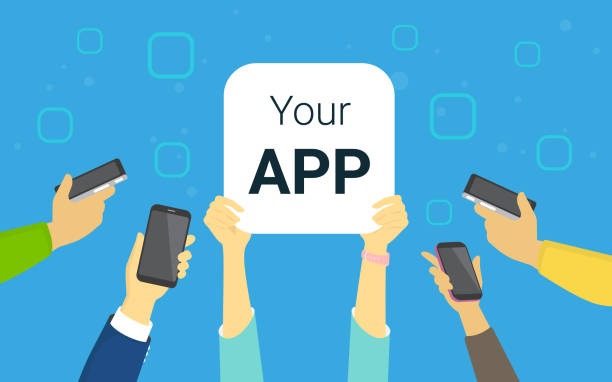You’ve probably downloaded twenty apps in the past month alone. A productivity tool that promised to “revolutionize your workflow.” A habit tracker that collected more data than your therapist. Another note-taking app because the last three weren’t quite right. And every single one of them required you to create an account, accept terms you didn’t read, and trust a company you’ve never heard of with your personal information.
Here’s the thing that should keep you up at night: you have absolutely no idea what these apps are doing with your data when you’re not looking.
The App Store Illusion
We’ve been conditioned to believe that if we need a solution, there’s an app for that. Need to track your expenses? Download an app. Want to manage your projects? There’s an app. Need to monitor your health metrics? You guessed it—download another app. We’ve become digital hoarders, collecting applications like they’re going out of style, each one chipping away at our privacy, storage space, and peace of mind.
But here’s what nobody tells you: most of these apps are solving problems so simple that you could build your own solution in an afternoon. The only difference is that someone else built theirs first, wrapped it in a pretty interface, and convinced you that you needed their specific implementation of a task manager, expense tracker, or habit logger.
The really insidious part? These apps don’t just solve your problem. They create new ones. They lock you into their ecosystem. They change their pricing model after you’ve invested months of data. They get acquired by companies you don’t trust. They shut down entirely, taking your information with them. And through it all, they’re collecting metrics about your behavior, selling insights about your habits, and monetizing your engagement in ways you’ll never fully understand.
The Hidden Cost of Convenience
Let’s talk about what you’re actually giving up every time you click “Accept” on those terms and conditions. That meditation app knows when you’re most stressed. Your period tracker has intimate details about your health that could be subpoenaed. That productivity app has timestamps of exactly when you’re working and what you’re working on. Your expense tracker knows your complete financial picture, down to that embarrassing impulse purchase at 2 AM.
Now imagine if one of these companies gets hacked. Or sells to a data broker. Or receives a government request for your information. Or simply decides to change their privacy policy because they need to boost quarterly revenue. You have no control, no recourse, and no real understanding of where your information ends up.
The convenience you thought you were getting? It came with a price tag you never agreed to pay.
When “User-Friendly” Means “We Own You”
There’s a particular kind of trap that modern apps set, and it’s so subtle that most people don’t notice until it’s too late. It starts innocently enough. You download a free app that does exactly what you need. You start using it daily. You build up months or years of data. You integrate it into your workflow. You get comfortable.
Then the pricing changes. The free tier gets restricted. Features you relied on move behind a paywall. Or worse—the app gets acquired, the new owners have “exciting changes planned,” and suddenly your simple tool becomes bloated with features you never wanted, serving purposes you never agreed to.
And you’re stuck. Because switching means losing all that data, relearning a new system, and hoping the next app won’t do the same thing. You’ve been locked in, and the key is held by someone whose interests fundamentally don’t align with yours.
The Revolution You Didn’t Know Was Happening
Here’s something that will fundamentally change how you think about technology: you don’t need to know how to code to build your own apps anymore. That statement would have been laughable five years ago, but we’re living in a different world now. The same revolution that democratized publishing, photography, and music production has finally reached software development.
Modern app creation tools have evolved to the point where the barrier between having an idea and having a working application has virtually disappeared. What used to require a computer science degree, months of development time, and thousands of dollars now takes an afternoon and costs less than your monthly streaming subscription. The technical complexity that kept normal people from building their own solutions has been abstracted away, leaving just the creative part—figuring out what you actually need.
This isn’t about becoming a developer or learning to code (though you can if you want to). This is about reclaiming control over your digital tools and refusing to let someone else decide how you should organize your life, track your goals, or manage your information.
What Building Your Own Actually Looks Like
Let me be clear about what I’m suggesting here. I’m not telling you to fire up a text editor and start learning JavaScript. I’m talking about using modern platforms designed specifically to let non-technical people create functional, professional applications without writing a single line of code.
Using an app creator, you can build exactly what you need—nothing more, nothing less. No bloated features you’ll never use. No data collection you didn’t authorize. No sudden pricing changes or policy updates. Just a tool that does precisely what you designed it to do, in exactly the way you want it to work.
Think about your current app situation. How many of those applications are you using at maybe twenty percent of their capacity? How many have features you’ve never touched, notifications you’ve muted, or premium tiers trying to convince you that you need capabilities you absolutely don’t? When you build your own solution, you’re not paying for someone else’s vision of what you might need someday. You’re creating exactly what serves your actual, current requirements.
The process itself is remarkably straightforward. You start with your problem—I need to track client invoices, I want to log my workouts, I need a family calendar that actually makes sense. Then you use visual builders and templates to construct your solution, dragging and dropping elements, connecting data, and customizing the interface until it works exactly how you think it should. No coding required, no technical jargon to decipher, no computer science knowledge necessary.
The Privacy Equation Changes Completely
When you control the tool, you control the data. It’s that simple. There’s no third-party server in some undisclosed location. No company reading your information to “improve the user experience.” No algorithm learning your patterns to sell insights to advertisers. Your information stays exactly where you put it, accessible only to the people you explicitly grant access to.
This is the privacy model that actually makes sense. Not hoping that a company’s privacy policy means what you think it means. Not trusting that they won’t change their practices when venture capital funding runs dry. Not crossing your fingers that they won’t get hacked or subpoenaed or acquired by someone with different values. Just straightforward control over your own information.
For sensitive data—medical records, financial information, personal journals, business documents—this difference is everything. You’re not wondering whether your therapy app is anonymizing your depression tracking before selling insights to pharmaceutical companies. You’re not hoping your finance app isn’t sharing your spending patterns with credit bureaus. You know exactly what’s happening with your information because you’re the only one with access to it.
The Economics Make More Sense Than You Think
Let’s do some actual math here. The average person subscribes to multiple productivity and utility apps. Five dollars here for cloud storage, ten dollars there for project management, fifteen for that premium note-taking app, another eight for habit tracking. Before you know it, you’re spending forty or fifty dollars monthly on digital tools, and that’s before counting the apps you pay for annually.
Now consider the alternative. Using an app maker, you might pay a fraction of that cost to build exactly what you need, paying only for what you actually use rather than subsidizing features built for other people’s use cases. The return on investment isn’t measured in months—it’s measured in weeks. And unlike subscription apps that reset the value counter every billing cycle, the apps you build continue providing value indefinitely without recurring fees constantly draining your account.
But the economics go deeper than just subscription costs. Think about the time you’ve spent learning new apps, only to have them change their interface or discontinue features you relied on. Think about the hours invested in migrating data between platforms when you finally get fed up with one app and switch to another. Think about the mental overhead of managing multiple accounts, passwords, and login systems across dozens of applications.
When you build your own tools, you eliminate these hidden costs entirely. There’s no learning curve imposed by someone else’s design decisions. No migration headaches when a company pivots. No password fatigue from managing yet another account. Just tools that work the way your brain works, following logic that makes sense to you rather than serving some product manager’s vision of how things should be organized.
Why This Matters More Now Than Ever
We’re at an inflection point in how technology intersects with daily life. The apps we use aren’t neutral tools anymore—they’re active participants in our routines, our decision-making processes, and our understanding of ourselves. They shape how we think about productivity, health, relationships, and success. And when those apps are built by companies whose primary obligation is to shareholders rather than users, the incentives get very misaligned very quickly.
The shift toward building your own solutions isn’t about being anti-technology or rejecting innovation. It’s about being intentional with your tools instead of accepting whatever Silicon Valley decides you need this quarter. It’s about choosing substance over marketing, functionality over features, and control over convenience.
This matters because the alternative—continuing to outsource every aspect of your digital life to apps with opaque business models and conflicting incentives—leads to a future where you have progressively less control over your own information, tools, and digital autonomy. Every app you download that you could have built yourself is another small surrender of independence, another acceptance that technology is something that happens to you rather than something you actively shape.
The Skills You Didn’t Know You Had
Here’s something interesting that happens when people start building their own apps: they realize they already had most of the skills required. The hard part of creating an application isn’t the technical implementation—it’s understanding the problem clearly enough to design a solution. And you already do that every time you organize a system, create a workflow, or figure out a better way to handle a recurring task.
The difference between thinking “I wish there was an app that…” and actually creating that app has collapsed to almost nothing. The tools exist. The platforms are mature. The learning curve is measured in hours, not months. The only real barrier is the mental model that says app creation is for other people, technical people, people with computer science degrees and start-up funding.
But you’re already designing systems every day. When you create a filing system for your documents, you’re doing information architecture. When you develop a routine for managing household tasks, you’re building a workflow. When you figure out a better way to track project deadlines, you’re solving the same problems that productivity apps solve—you’re just doing it in your head or on paper instead of digitally.
Translating those mental systems into actual applications is now remarkably straightforward because modern platforms do all the technical heavy lifting. You focus on the logic, the flow, the user experience—the parts you already understand intuitively. The platform handles databases, cloud synchronization, user authentication, and all the other technical complexity that used to require engineering teams.
What You Can Actually Build
The scope of what’s possible without technical knowledge is genuinely surprising. Custom client management systems that track interactions, invoices, and project status exactly how your business operates. Family organization apps that combine calendars, shopping lists, and task management in ways that make sense for your specific household dynamics. Personal health dashboards that aggregate exactly the metrics you care about without the noise of commercial fitness apps trying to sell you premium features.
Financial tracking that follows your actual budgeting method rather than forcing you into someone else’s category system. Project management that matches your workflow instead of making you adapt to predetermined templates. Content planning tools that organize your creative process the way your brain actually works rather than how some product designer imagined it should work.
These aren’t theoretical possibilities—they’re applications that real people without coding backgrounds are building right now. The difference between wanting these solutions and having them is no longer technical capability or financial resources. It’s just the decision to stop accepting pre-packaged solutions and start creating tools that actually serve your needs.
The Learning Curve Is A Feature, Not A Bug
There’s an interesting paradox in modern software. The more user-friendly an app tries to be, the more it needs to make assumptions about how you work. Those assumptions are baked into the interface, the workflow, the organization system. And when those assumptions don’t match your actual process, you end up fighting the tool instead of using it.
When you build your own solution, the learning curve exists, but it’s focused entirely on understanding your own needs and processes more deeply. You’re not learning someone else’s terminology or memorizing arbitrary interface patterns. You’re clarifying your own thinking about how you want to work, then implementing that directly.
This kind of learning actually adds value. Understanding your own processes well enough to codify them into an application makes you better at those processes. It forces you to think through edge cases, clarify decision points, and optimize workflows in ways you never would if you were just using someone else’s pre-built solution.
And here’s the thing about that learning investment: it compounds. The first app you build teaches you the fundamentals. The second one goes faster. By the third or fourth, you’re moving quickly enough that creating a new tool takes less time than researching, comparing, and learning someone else’s app would have taken anyway.
The Future You’re Building
Every app you create instead of download is a small act of digital independence. It’s choosing self-sufficiency over convenience, control over features, and intentionality over passive consumption. Individually, each decision seems minor. Collectively, they add up to a fundamentally different relationship with technology.
Instead of your digital life being scattered across dozens of platforms owned by different companies with different business models and different levels of trustworthiness, you’re building an integrated ecosystem of tools designed specifically for how you actually work and live. Instead of hoping that the next app update won’t break your workflow, you control when and how your tools evolve. Instead of wondering what’s happening with your data, you know exactly where it is and who has access to it.
This isn’t nostalgia for some pre-digital era or a rejection of modern technology. It’s the opposite—it’s taking full advantage of how sophisticated and accessible technology has become. We’re past the point where creating software requires specialized knowledge and expensive infrastructure. The tools exist. The platforms are ready. The only question is whether you’re ready to stop being just a consumer of apps and start being a creator of solutions.
The divide between technical people who build things and everyone else who uses them is dissolving. You can either recognize that shift and take advantage of it, or you can keep downloading apps, accepting terms you don’t read, and hoping that this time, this company, this platform will actually have your best interests at heart.
Your digital tools should serve you, not the other way around. And now, for the first time in computing history, making that a reality is actually within reach for anyone willing to spend an afternoon learning how to build instead of just download.
The question isn’t whether you can do this. The question is: what are you going to build first?



